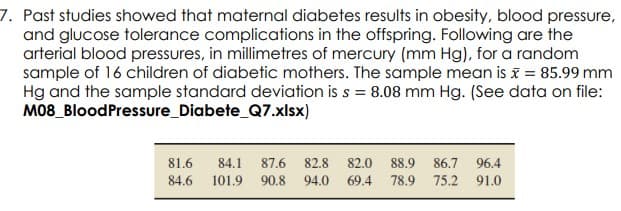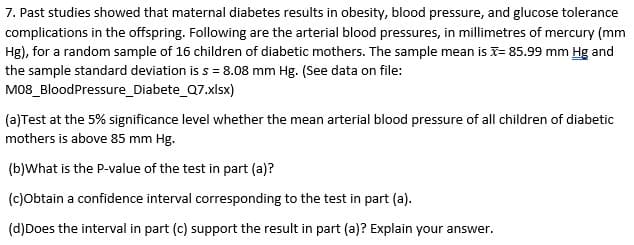Past studies showed that maternal diabetes results in obesity, blood pressure, and glucose tolerance complications in the offspring. Following are the arterial blood pressures, in millimetres of mercury (mm Hg), for a random sample of 16 children of diabetic mothers. The sample mean is ?̅= 85.99 mm Hg and the sample standard deviation is ? = 8.08 mm Hg. (See data on file: M08_BloodPressure_Diabete_Q7.xlsx) (a)Test at the 5% significance level whether the mean arterial blood pressure of all children of diabetic mothers is above 85 mm Hg. (b)What is the P-value of the test in part (a)? (c)Obtain a confidence interval corresponding to the test in part (a). (d)Does the interval in part (c) support the result in part (a)? Explain y
Past studies showed that maternal diabetes results in obesity, blood pressure, and glucose tolerance complications in the offspring. Following are the arterial blood pressures, in millimetres of mercury (mm Hg), for a random sample of 16 children of diabetic mothers. The sample mean is ?̅= 85.99 mm Hg and the sample standard deviation is ? = 8.08 mm Hg. (See data on file: M08_BloodPressure_Diabete_Q7.xlsx)
(a)Test at the 5% significance level whether the mean arterial blood pressure of all children of diabetic mothers is above 85 mm Hg.
(b)What is the P-value of the test in part (a)?
(c)Obtain a confidence interval corresponding to the test in part (a).
(d)Does the interval in part (c) support the result in part (a)? Explain your answer.


Step by step
Solved in 2 steps


